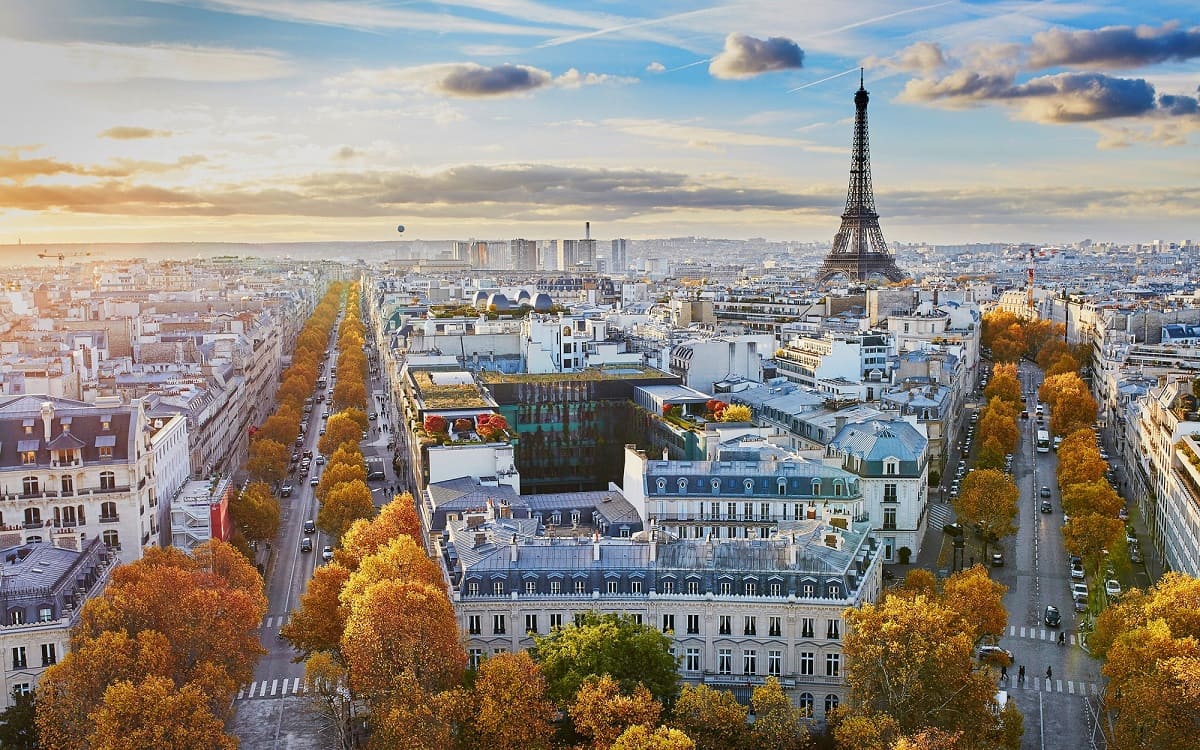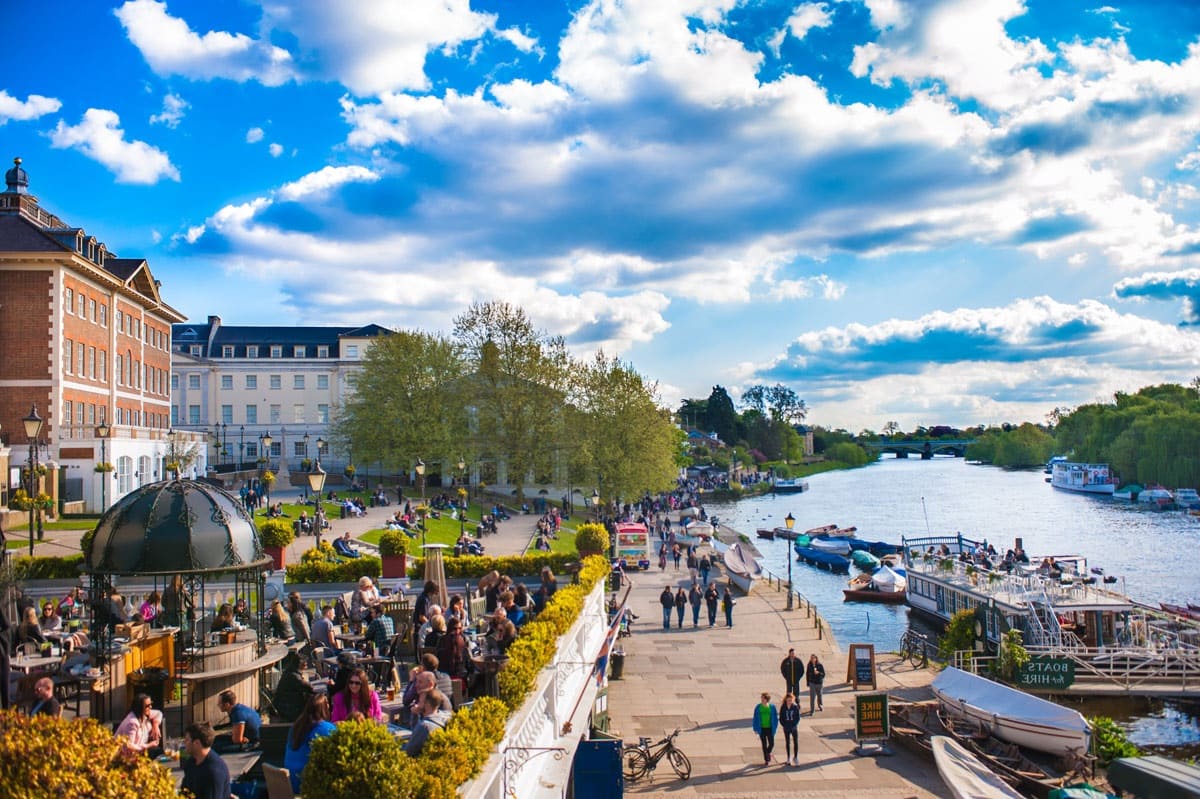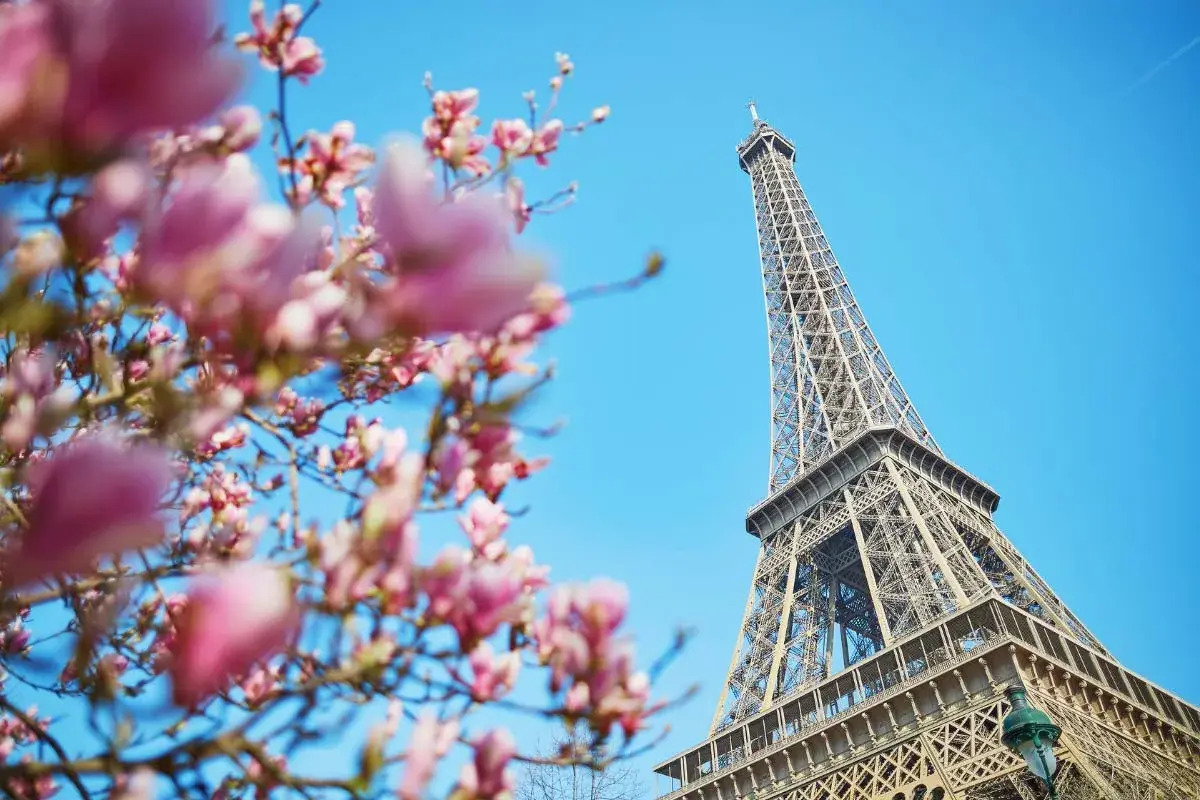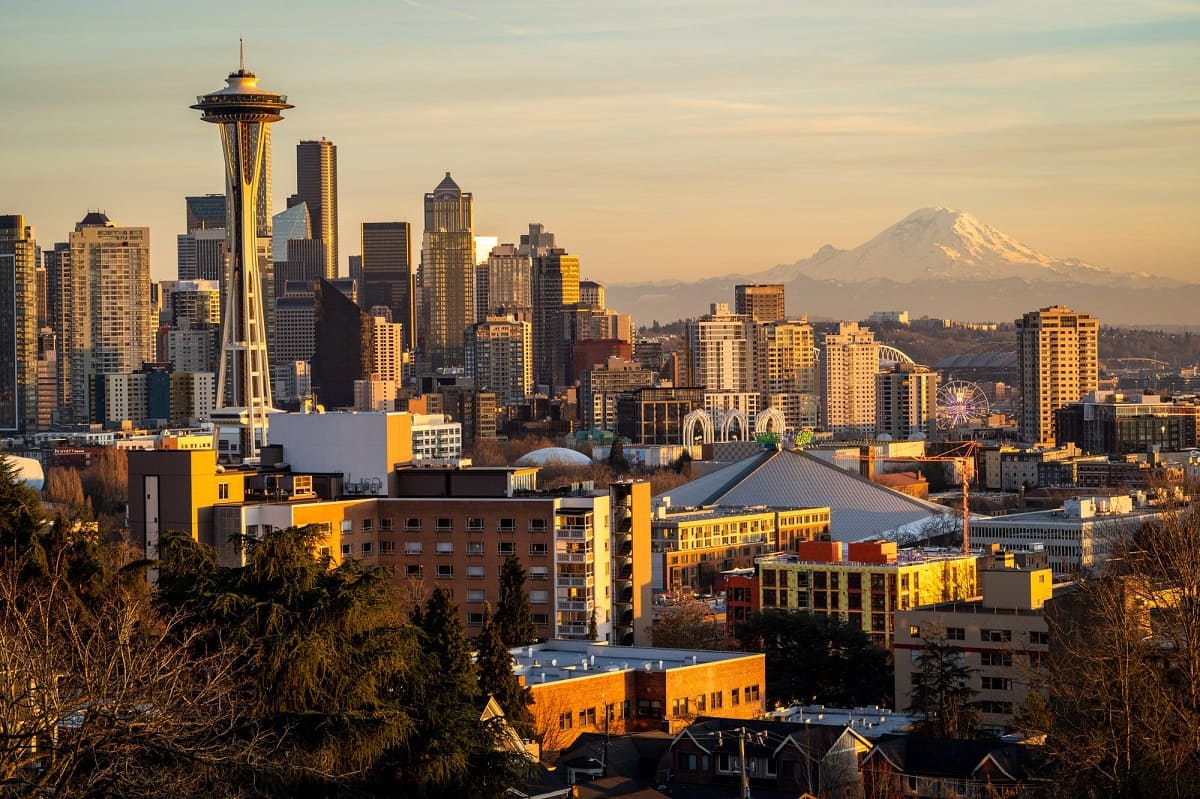Home>Weather and Climate>Average Monthly Temperature In Paris


Weather and Climate
Average Monthly Temperature In Paris
Published: March 1, 2024
Discover the average monthly temperature in Paris and plan your trip accordingly. Learn about the weather and climate to make the most of your visit.
(Many of the links in this article redirect to a specific reviewed product. Your purchase of these products through affiliate links helps to generate commission for Temperatures.com, at no extra cost. Learn more)
Table of Contents
Introduction
Paris, the capital city of France, is renowned for its rich history, iconic landmarks, and vibrant culture. Nestled in the heart of Europe, Paris is not only a hub of art, fashion, and gastronomy but also a city with a diverse and dynamic climate. Understanding the average monthly temperature in Paris is crucial for residents, tourists, and businesses alike, as it directly impacts daily life, travel plans, and various industries.
The temperature in Paris is influenced by a myriad of factors, including its geographical location, proximity to water bodies, and the broader climate patterns of the region. From the romantic springtime to the cozy winter months, each season brings a unique charm to the city, characterized by distinct temperature variations. Moreover, with the growing concerns surrounding climate change, there is a heightened awareness of the potential impact on Paris's temperature patterns and the need for sustainable measures to mitigate these effects.
In this article, we will delve into the climate of Paris, exploring the historical and current average monthly temperatures, seasonal variations, and the factors that contribute to these fluctuations. Additionally, we will examine the potential impact of climate change on Paris's temperature trends, providing valuable insights into the evolving dynamics of the city's climate. Join us on this journey as we unravel the fascinating tapestry of Paris's average monthly temperature and gain a deeper appreciation for the intricate interplay of nature and urban life in the City of Light.
Read more: Monthly Average Temperatures In Tampa
Climate in Paris
Paris experiences a temperate maritime climate, characterized by mild temperatures, moderate rainfall, and relatively consistent weather patterns throughout the year. Situated in northern France, Paris is influenced by its proximity to the Atlantic Ocean and the North Sea, which play a significant role in shaping its climate. The city's location at a latitude of approximately 48.8 degrees north further contributes to its distinct seasonal variations.
The summer months in Paris, spanning from June to August, are typically warm and pleasant, with average high temperatures ranging from 20°C to 25°C (68°F to 77°F). This period often sees an influx of tourists eager to explore the city's renowned landmarks, bask in the sunshine at outdoor cafes, and partake in cultural festivities. The longer daylight hours during summer provide ample opportunities for leisurely strolls along the Seine River and picnics in the picturesque parks that dot the cityscape.
As autumn sets in, Paris undergoes a gradual transition marked by cooler temperatures and the breathtaking transformation of its foliage. From September to November, average temperatures range from 12°C to 17°C (54°F to 63°F), creating a captivating backdrop for romantic walks through the city's enchanting boulevards and gardens. The autumnal ambiance, coupled with the city's artistic allure, makes this season a favorite among visitors and locals alike.
Winter in Paris, spanning from December to February, brings a touch of magic as the city adorns itself with festive lights and seasonal decorations. While the temperatures can dip to an average low of 3°C to 5°C (37°F to 41°F), the city exudes a cozy charm, inviting visitors to savor hot chocolate at charming cafes and admire the architectural splendor of landmarks such as the Eiffel Tower and Notre-Dame Cathedral against the backdrop of a winter wonderland.
Finally, spring emerges in Paris from March to May, painting the city with vibrant blooms and a sense of renewal. Average temperatures range from 9°C to 15°C (48°F to 59°F), creating an idyllic atmosphere for leisurely walks in the city's renowned gardens, including the iconic Tuileries Garden and Luxembourg Gardens. The arrival of spring breathes new life into Paris, inspiring a sense of optimism and a celebration of nature's beauty.
In essence, the climate in Paris embodies a harmonious blend of seasonal nuances, each offering a distinct experience for residents and visitors. Understanding these temperature variations is essential for planning activities, choosing the ideal time to visit, and embracing the unique charm of Paris throughout the year.
Factors Affecting Monthly Temperature
The monthly temperature in Paris is influenced by a multitude of factors that collectively shape the city's climate dynamics. These factors play a pivotal role in determining the variations in temperature experienced throughout the year, contributing to the distinct seasonal transitions that define Parisian weather.
Geographical Location: Paris's geographical positioning at approximately 48.8 degrees north latitude significantly impacts its monthly temperature patterns. As a city situated in the northern hemisphere, Paris experiences seasonal changes in solar radiation, leading to variations in temperature. During the summer months, the tilt of the Earth's axis results in longer daylight hours, contributing to warmer temperatures, while the winter season sees reduced daylight and cooler temperatures.
Proximity to Water Bodies: The presence of water bodies, including the Seine River that meanders through the heart of Paris, and the city's proximity to the Atlantic Ocean and the North Sea, exerts a moderating influence on its temperature. Water bodies have a higher specific heat capacity than land, allowing them to absorb and release heat more slowly. As a result, Paris benefits from milder temperatures, especially during the transition seasons of spring and autumn, when the thermal inertia of the water bodies helps regulate the city's climate.
Urban Heat Island Effect: The urban landscape of Paris, characterized by its dense infrastructure and extensive built environment, contributes to the phenomenon known as the urban heat island effect. This effect leads to slightly higher temperatures within the city compared to its surrounding rural areas. The abundance of concrete, asphalt, and buildings in urban areas absorbs and retains heat, elevating the overall temperature. Consequently, Paris experiences a microclimate where urbanized regions exhibit slightly warmer temperatures, particularly during the summer months.
Regional Wind Patterns: The prevailing wind patterns in the Parisian region play a crucial role in influencing the city's monthly temperature variations. Winds originating from different directions can bring contrasting air masses, impacting the temperature and weather conditions. For instance, southerly winds may transport warmer air from the Mediterranean region, contributing to higher temperatures, while northerly winds can usher in cooler air from the polar regions, leading to a drop in temperature.
Elevation: While Paris is not characterized by significant variations in elevation, subtle changes in terrain can influence local temperature gradients. Areas with slightly higher elevation within the city may experience marginally cooler temperatures, especially during clear nights when cold air tends to settle in low-lying regions.
Vegetation and Green Spaces: The presence of green spaces and vegetation within Paris, including its numerous parks and gardens, contributes to the city's microclimate. Trees and greenery provide shade and moisture, mitigating the impact of urban heat and contributing to localized cooling effects. Additionally, the evapotranspiration process from vegetation can influence humidity levels and temperature, further shaping the city's climate.
Understanding these diverse factors that affect monthly temperature in Paris provides valuable insights into the intricate interplay of natural and anthropogenic influences on the city's climate. By considering these elements, we gain a deeper appreciation for the nuanced dynamics that contribute to Paris's temperature variations, enriching our understanding of the city's captivating weather patterns.
Historical Average Monthly Temperature
The historical average monthly temperature in Paris offers a compelling glimpse into the city's climatic evolution over the years. By examining the temperature records spanning decades, we gain valuable insights into the long-term trends and fluctuations that have shaped Paris's weather patterns.
Historical data reveals that Paris has experienced notable variations in its average monthly temperatures, reflecting the interplay of natural climate cycles and potential anthropogenic influences. The meticulous preservation of temperature records has enabled meteorologists and climatologists to construct a comprehensive timeline of Paris's temperature history, providing a robust foundation for understanding the city's climatic dynamics.
Throughout the historical timeline, Paris has exhibited distinct seasonal temperature patterns, with discernible fluctuations in average monthly temperatures. The summer months have generally been characterized by warm and pleasant conditions, with occasional variations reflecting broader climatic oscillations. Similarly, the winter months have showcased a range of temperatures, capturing the nuances of cold spells and milder interludes that contribute to the city's winter ambiance.
Moreover, the historical average monthly temperature data underscores the cyclical nature of Paris's climate, highlighting recurring temperature trends that have defined the city's seasonal transitions. These historical insights serve as a valuable reference point for contextualizing contemporary temperature patterns and assessing the potential impact of long-term climate shifts on Paris's weather.
By delving into the historical average monthly temperature data, we gain a deeper appreciation for the resilience and adaptability of Paris in the face of climatic variations. This historical perspective fosters a nuanced understanding of the city's climate, transcending individual weather events to reveal the broader narrative of Paris's temperature legacy.
In essence, the historical average monthly temperature in Paris serves as a testament to the city's enduring relationship with nature, encapsulating the ebb and flow of seasonal temperatures that have woven themselves into the fabric of Parisian life. This historical continuum of temperature records provides a compelling backdrop for exploring the city's climate, offering a lens through which to comprehend the intricate tapestry of Paris's weather heritage.
Current Average Monthly Temperature
The current average monthly temperature in Paris reflects the dynamic interplay of seasonal transitions and the prevailing climatic conditions that shape the city's weather patterns. As of the latest available data, Paris experiences a range of temperatures across the months, capturing the essence of each season and its distinct thermal characteristics.
During the summer months, which typically span from June to August, Paris basks in average high temperatures ranging from 20°C to 25°C (68°F to 77°F). This period sees the city come alive with outdoor activities, al fresco dining, and a palpable sense of joie de vivre as residents and visitors embrace the warmth and sunshine. The longer daylight hours during summer provide ample opportunities for leisurely strolls along the Seine River and picnics in the picturesque parks that dot the cityscape.
As autumn sets in, Paris undergoes a gradual transition marked by cooler temperatures and the breathtaking transformation of its foliage. From September to November, average temperatures range from 12°C to 17°C (54°F to 63°F), creating a captivating backdrop for romantic walks through the city's enchanting boulevards and gardens. The autumnal ambiance, coupled with the city's artistic allure, makes this season a favorite among visitors and locals alike.
Winter in Paris, spanning from December to February, brings a touch of magic as the city adorns itself with festive lights and seasonal decorations. While the temperatures can dip to an average low of 3°C to 5°C (37°F to 41°F), the city exudes a cozy charm, inviting visitors to savor hot chocolate at charming cafes and admire the architectural splendor of landmarks such as the Eiffel Tower and Notre-Dame Cathedral against the backdrop of a winter wonderland.
Finally, spring emerges in Paris from March to May, painting the city with vibrant blooms and a sense of renewal. Average temperatures range from 9°C to 15°C (48°F to 59°F), creating an idyllic atmosphere for leisurely walks in the city's renowned gardens, including the iconic Tuileries Garden and Luxembourg Gardens. The arrival of spring breathes new life into Paris, inspiring a sense of optimism and a celebration of nature's beauty.
In essence, the current average monthly temperature in Paris encapsulates the city's seasonal mosaic, offering a glimpse into the nuanced thermal tapestry that defines each month. By embracing these temperature variations, Parisians and visitors alike immerse themselves in the ever-changing yet enchanting climate of the City of Light.
This section provides a comprehensive overview of the current average monthly temperature in Paris, offering a detailed exploration of the city's temperature dynamics across the seasons.
Read more: Average Monthly Temperature In Colorado
Seasonal Variations
The seasonal variations in Paris paint a captivating portrait of the city's ever-changing climate, each season bringing its own distinct charm and atmospheric allure. From the balmy days of summer to the crisp embrace of winter, Paris undergoes a mesmerizing transformation, offering a tapestry of experiences shaped by the interplay of temperature, light, and natural rhythms.
Summer in Paris unfolds as a symphony of warmth and vitality, with the city bathed in the golden glow of sunshine. From June to August, Parisians and visitors alike revel in the balmy temperatures, embracing the outdoor ambiance that permeates the city. The Seine River glistens under the radiant sun, while the city's iconic landmarks, from the Louvre Museum to the Arc de Triomphe, stand resplendent against the azure skies. The extended daylight hours provide ample opportunities for leisurely strolls along the tree-lined boulevards, with the city's parks and gardens becoming idyllic retreats for picnics and relaxation. The effervescent energy of summer permeates the air, infusing the city with a palpable sense of joie de vivre.
As summer gracefully transitions into autumn, Paris undergoes a metamorphosis, adorned with the rich hues of fall foliage. From September to November, a gentle coolness permeates the air, signaling the arrival of a new season. The city's tree-lined avenues and grand boulevards become adorned with a tapestry of reds, oranges, and golds, casting a spellbinding aura over the urban landscape. The crisp air invites contemplative walks through the city's enchanting parks, where the rustling of leaves and the earthy scent of autumn evoke a sense of tranquility. Paris embraces the artistry of autumn, offering a respite from the summer bustle and inviting introspection amid nature's captivating display.
Winter descends upon Paris with a touch of enchantment, as the city dons its festive attire and embraces the magic of the holiday season. From December to February, Paris becomes a winter wonderland, with the soft glow of streetlights illuminating the cobbled streets and the city's iconic monuments. The chill in the air is accompanied by a sense of warmth and conviviality, as Parisians and visitors gather in cozy cafes, sipping hot beverages and savoring delectable pastries. The city's cultural institutions and theaters come alive with seasonal performances, offering a rich tapestry of entertainment against the backdrop of a wintry landscape. Paris exudes a timeless elegance during winter, inviting all to partake in its seasonal splendor.
Spring emerges as a jubilant celebration of renewal and vitality, infusing Paris with a sense of optimism and rejuvenation. From March to May, the city bursts into bloom, with vibrant flowers adorning its parks, gardens, and boulevards. The air is filled with the sweet fragrance of blossoms, and the city's green spaces become havens of serenity and natural beauty. Parisians and visitors alike embrace the arrival of spring, reveling in the emergence of life and the promise of new beginnings. The city's outdoor cafes and bistros buzz with activity, as patrons savor the delightful ambiance of spring and bask in the gentle warmth that heralds the arrival of a new season.
In essence, the seasonal variations in Paris offer a captivating journey through the city's ever-changing climate, each season weaving a unique narrative of beauty, vitality, and transition. From the languid days of summer to the crisp embrace of winter and the vibrant revival of spring, Paris invites all to immerse themselves in the kaleidoscope of experiences that define its seasonal tapestry.
Impact of Climate Change
The impact of climate change on Paris's temperature dynamics is a topic of growing significance, reflecting the broader global concerns surrounding environmental sustainability and the repercussions of anthropogenic activities. As the Earth's climate undergoes unprecedented shifts, Paris, like many other urban centers, faces the tangible effects of these changes, influencing its average monthly temperatures and seasonal patterns.
One of the discernible impacts of climate change on Paris is the alteration of traditional temperature norms, leading to fluctuations that challenge established climatic expectations. The city has witnessed instances of uncharacteristic temperature extremes, including heatwaves and unseasonably warm periods, which disrupt the historical balance of its seasonal temperature profiles. These deviations not only pose challenges for urban planning and infrastructure but also impact the well-being of residents and the city's ecological equilibrium.
Furthermore, the influence of climate change extends beyond temperature variations, encompassing broader environmental shifts that reverberate across Paris's landscape. Changes in precipitation patterns, including intense rainfall events and altered snowfall dynamics, have the potential to disrupt the city's hydrological systems and impact its water management strategies. These alterations in the water cycle can have cascading effects on urban resilience, agricultural practices, and the overall sustainability of Paris's ecosystems.
The implications of climate change on Paris's temperature dynamics also extend to the city's social and economic fabric. From the tourism sector, which relies on predictable seasonal weather patterns, to the agricultural industry, which faces evolving cultivation conditions, the ramifications of shifting temperatures permeate various aspects of Parisian life. Additionally, the urban heat island effect, exacerbated by rising temperatures, poses challenges for mitigating heat-related health risks and optimizing energy consumption in the city.
Amid these challenges, Paris has demonstrated a proactive stance in addressing the impact of climate change on its temperature dynamics. The city has embraced sustainable initiatives, including urban greening projects, renewable energy integration, and climate-resilient urban design, to mitigate the effects of rising temperatures and foster a more adaptable urban environment. These efforts underscore Paris's commitment to navigating the complexities of climate change and safeguarding its unique climatic heritage.
In essence, the impact of climate change on Paris's temperature dynamics underscores the imperative of collective action to address environmental challenges and foster climate resilience. By acknowledging and responding to these shifts, Paris continues to chart a course toward a sustainable and adaptable future, where the city's temperature dynamics reflect a harmonious coexistence with nature in the face of evolving climatic realities.
Conclusion
In conclusion, the average monthly temperature in Paris encapsulates the city's rich tapestry of climate dynamics, reflecting the interplay of natural influences, urban characteristics, and the evolving impact of climate change. From the balmy embrace of summer to the enchanting allure of winter and the vibrant renewal of spring, Paris weaves a captivating narrative of seasonal variations, each contributing to the city's timeless charm.
The historical average monthly temperature data provides a compelling lens through which to view Paris's climatic legacy, offering insights into the city's enduring relationship with nature and the cyclical patterns that have shaped its weather over time. These historical nuances serve as a testament to Paris's resilience in the face of climatic fluctuations, highlighting the city's ability to adapt and thrive amid changing temperature trends.
Furthermore, the current average monthly temperature in Paris paints a vivid portrait of the city's seasonal mosaic, capturing the essence of each month and inviting residents and visitors to immerse themselves in the ever-changing yet enchanting climate of the City of Light. By embracing these temperature variations, individuals gain a deeper appreciation for the nuanced thermal tapestry that defines Paris throughout the year.
The seasonal variations in Paris offer a captivating journey through the city's ever-changing climate, each season weaving a unique narrative of beauty, vitality, and transition. From the languid days of summer to the crisp embrace of winter and the vibrant revival of spring, Paris invites all to immerse themselves in the kaleidoscope of experiences that define its seasonal tapestry.
Moreover, the impact of climate change on Paris's temperature dynamics underscores the imperative of collective action to address environmental challenges and foster climate resilience. By acknowledging and responding to these shifts, Paris continues to chart a course toward a sustainable and adaptable future, where the city's temperature dynamics reflect a harmonious coexistence with nature in the face of evolving climatic realities.
In essence, the average monthly temperature in Paris serves as a testament to the city's enduring relationship with nature, encapsulating the ebb and flow of seasonal temperatures that have woven themselves into the fabric of Parisian life. This comprehensive exploration of Paris's temperature dynamics offers a profound understanding of the city's climate heritage, enriching our appreciation for the intricate interplay of nature and urban life in the City of Light.














